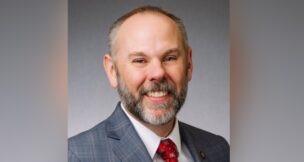Rural communities seek ways to stop brain drain
Staff //July 10, 2019//
Federal Reserve Bank of Richmond president Tom Barkin wants to know what stifles development and employment in rural counties in the five-state district of South Carolina, North Carolina, Virginia, West Virginia and Maryland. Barkin has been traveling to rural communities throughout the district to discuss challenges facing community and business leaders.
“The labor markets in the bigger cities are doing great,” he said. “It’s the labor markets in the smaller towns that are behind. And in my job, you have to ask yourself, what’s working and what’s not working in the smaller towns, and what’s it going to take to bring those smaller labor markets up to the levels of the bigger cities?”
On Tuesday, Barkin met with business, education and development leaders at Orangeburg-Calhoun Technical College to help identify the issues rural areas face.
“I’m just trying to get a real, on the ground understanding of what is and what isn’t working,” Barkin said. “ … We need to create a reason for people to want to live here.”
Barkin found some answers at the Workforce Training Roundtable: education, housing and amenities.
“People have to like being here,” Charles Williams, president and CEO of Orangeburg’s Regional Medical Center, told Barkin.
Barkin will use the information gathered at the roundtable, hosted by Orangeburg-Calhoun Tech president Walt Tobin, to compile data that could be used to request federal funding for programs such as prekindergarten or certificate programs. The country’s 12 Federal Reserve Banks leverage monetary policy to strengthen the nation’s economy and the financial stability of its communities.
“With the Federal Reserve, our charter is limited in what we do,” he said. “But I do think we have a research arm that’s very talented in these things. We can bring some light to these things and hopefully maybe, even in this conversation, we brought some attention for local leaders to think about.”
Williams said the hospital has to recruit doctors and nurses from outside Orangeburg County and pay them 20% to 30% more than urban hospitals. The medical center is working with Claflin University and Orangeburg-Calhoun Tech to train potential nurses and medical technicians who already live there.
“Until I get the education and the people here, it’s a constant fight,” he said. “I’m having to recruit from across the country, and there is a cost to that.”
Williams said the hospital difficulty finding employees for several reasons, including a lack of qualified candidates and a shortage of safe, affordable places to live.
Brian Hamrick, director of human resources for Zeus, a biomaterial manufacturer with several sites throughout Orangeburg County, said he faces similar challenges luring engineers and polymer experts to work at those facilities.
“They’re not settling in Orangeburg,” he said.
Gregory Robinson, executive director of the Orangeburg County Development Commission, said 15,000 people commute into Orangeburg County daily from areas such as Columbia, Lexington, Summerville and Charleston. Robinson said another 18,000 commute to a business outside the county to work.
The county’s institutions of higher learning are working to educate potential employees to meet the growing demand for skilled workers in manufacturing.
“In rural settings, there’s loads of talent,” said Aaron Hatch, plant director for the Starbucks Sandy Run Roasting Plant in Gaston, where 90 million pounds of coffee beans are roasted annually.
Hatch said potential employees are available locally, but many lack the skills necessary to work in manufacturing or plant maintenance. He said more efforts need to be made to interest young people in careers in an evolving manufacturing industry.
“Manufacturing jobs are not what they used to be,” he said. “There are very few jobs now in manufacturing that require something like stuffing beans into bags.”
Robinson said the Orangeburg County Development Commission has been successful in attracting business to the county, but more needs to be done to staff those businesses with qualified employees who will live locally.
“Orangeburg is poor,” said Claflin University president Dr. Henry Tisdale. “There’s a drain. People with intellectual capabilities are leaving.”
Tisdale said Claflin students feel Orangeburg lacks entertainment options — a movie theater, for example — which makes staying in town after graduation unappealing.
“There is nothing to do in this county,” Williams said, saying hospital employees who share students’ frustration opt to live in places such as Charleston, Columbia, Summerville or Lexington.
The roundtable participants also discussed the lack of affordable housing in safe neighborhoods. Tisdale said he would like to encourage upperclassmen at Claflin to move off campus and become active in the Orangeburg community to increase the likelihood of post-graduation retention, but he said there is not enough affordable housing inventory to do so.
“We do need more affordable housing in Orangeburg, but it’s also needed in every other community in South Carolina,” said Marion Moore with the Century 201 Moore Group, which manages about 500 rental properties throughout Orangeburg.
Moore said public-private partnerships to develop affordable housing have been successful in other cities and he’s confident they could work in Orangeburg.
“We need to try it,” he said.
Participants agreed that many pieces need to coalesce to solve the problems facing Orangeburg and other rural areas.
“We’re struggling with more than just jobs,” Tisdale said. “We have to concentrate on community building.”














